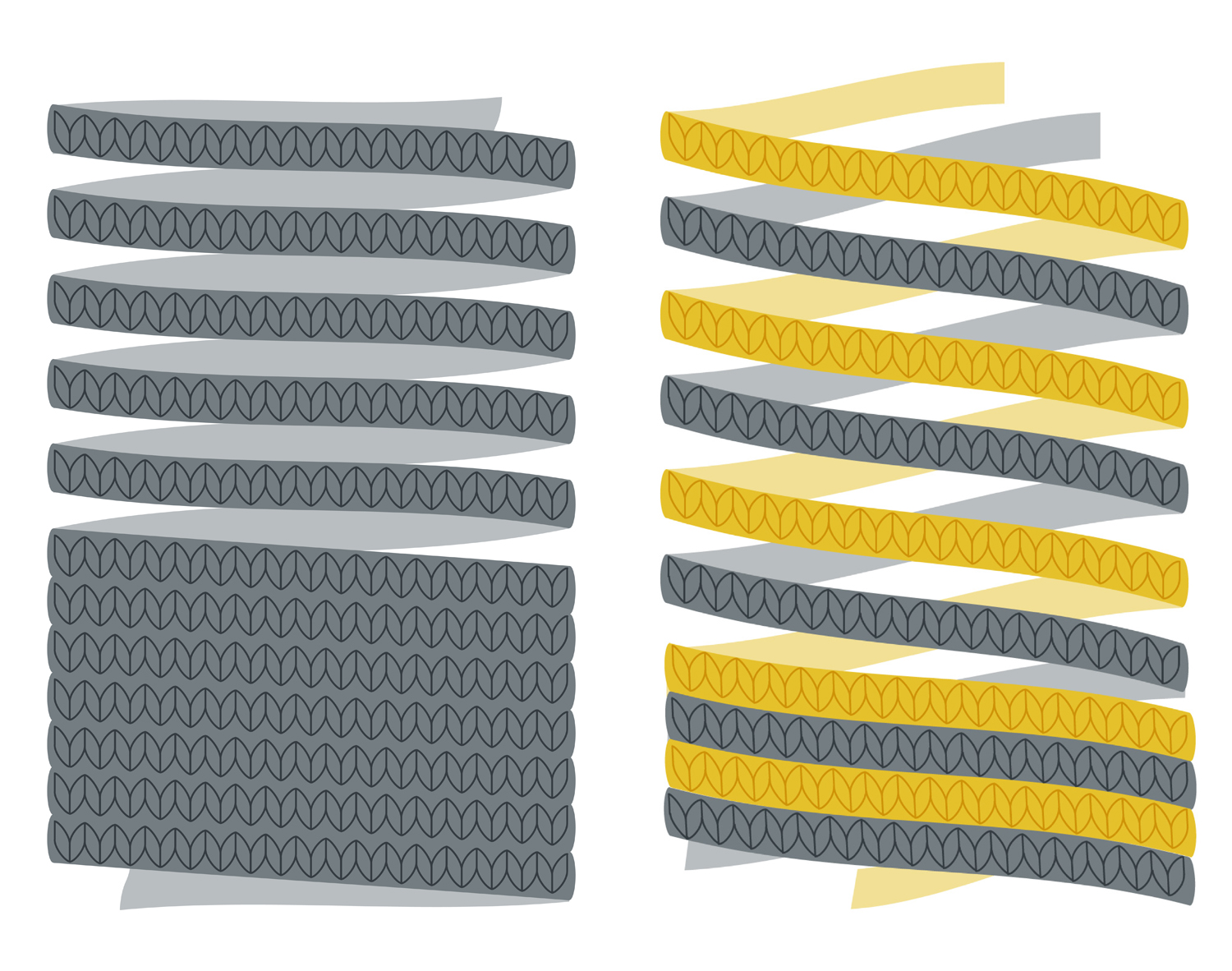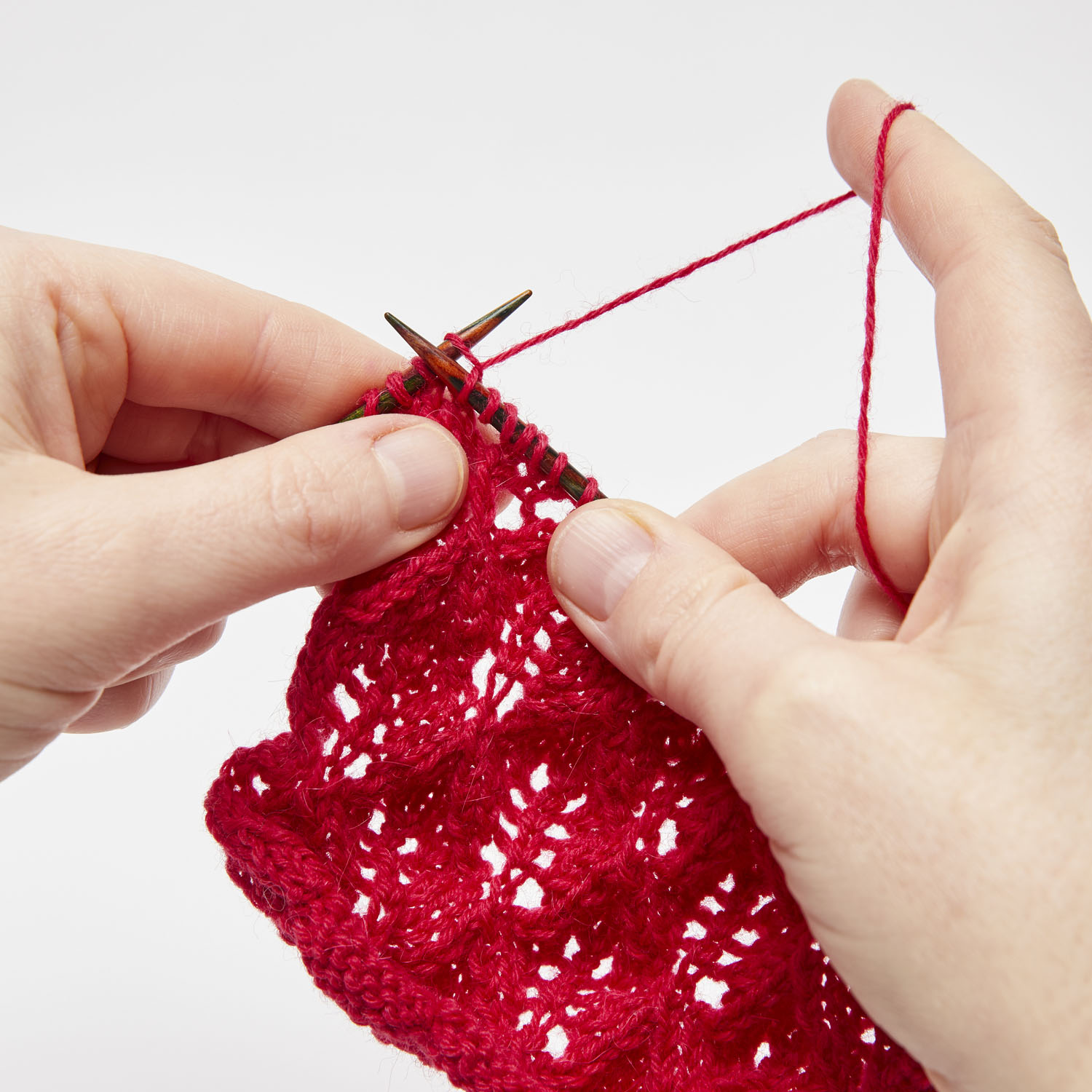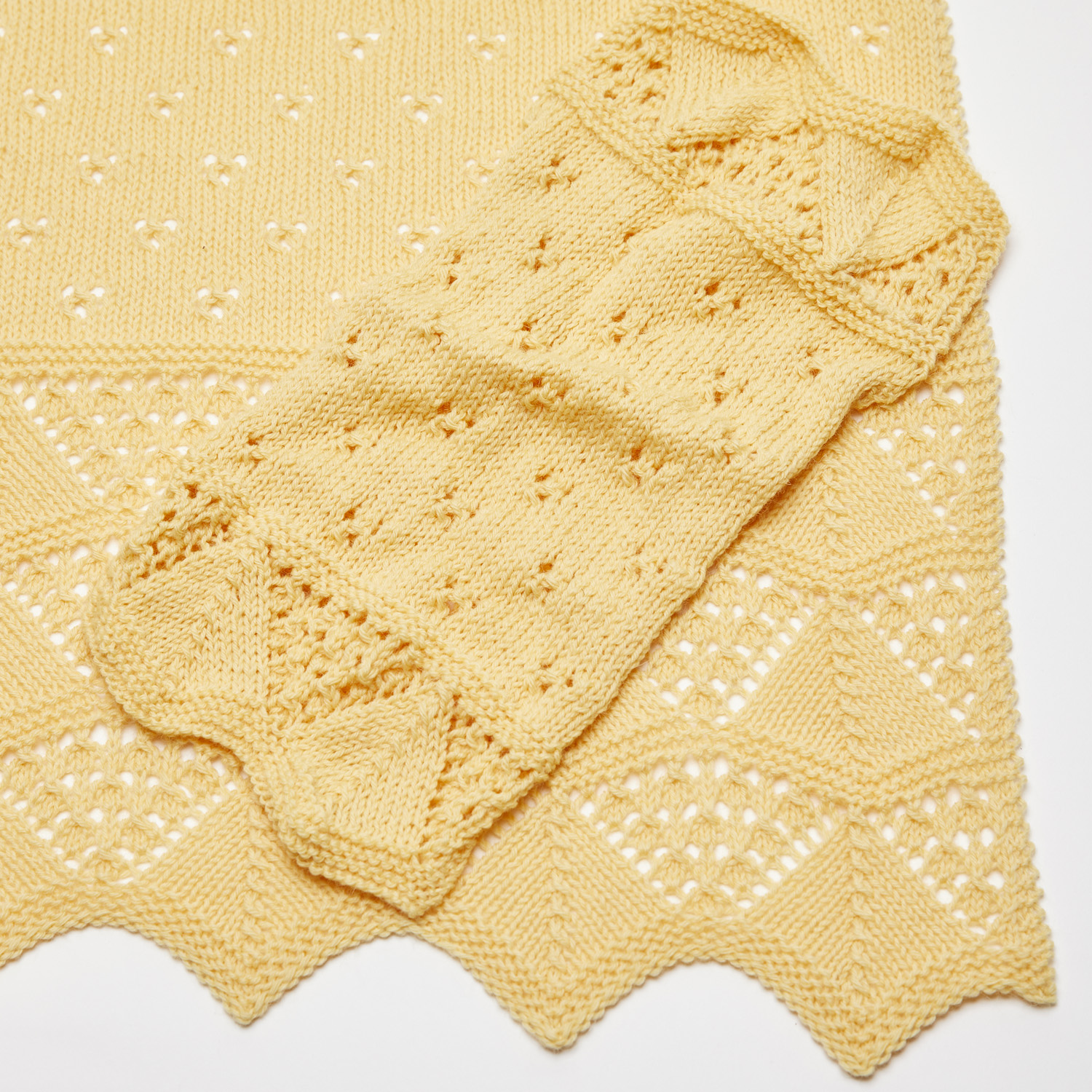It seems hardly a week goes by at the moment without a news item on the uptick in interest in crafts like knitting. Over the last 18 months, so many people have found or returned to knitting … what a wonderful thing! We often get asked to suggest books suited to beginners, and today we’ve collected those recommendations together. So if you are learning to knit and looking for help, or have a loved one who is, this post is for you!
Read moreSo what is helical knitting?
Image © Mimi Codd.
When you knit in the round, you aren’t working discrete, complete rounds, in the same way as you would work a row in flat knitting. Your knitting isn’t a series of rings of stitches sat on top of each other. Instead, in each round you are working a complete circuit or 360° turn of a helix. This is important because it means that the first stitch in your round is not adjacent to the last stitch in your round. In normal knitting you work a single, complete spiral of stitches, where the last stitch of the previous round is adjacent to the first stitch of the next round. Helical knitting turns this on its head, and sets up multiple spirals all sitting on top of each other.
Read moreVideo: Fixing Mistakes by Tinking
Learning to fix a mistake in your knitting is really empowering. I remember in my early knitting days I would traipse down the hill to the local yarn shop whenever something went amiss in my knitting. The owner, Tina, was really patient with me, and picked up dropped stitches, helped me to rip back, and eventually, once my confidence had grown, she showed me how to fix my own mistakes. It really marks a change in your relationship with your knitting when you are able to get a project back on track on your own.
Video: Blocking Lace Using Wires
Blocking lace is completely magical. You cast off, and have a piece of fabric that to be honest, could look like a tangled hair net, and transform it into a thing of beauty. The image above shows how different the unblocked mini-Aphaca scarf looks from the finished, blocked blanket. Blocking can be carried out with a minimum of equipment (just a clean, dry space, towel and some pins), but some extra bits and bobs can make the job far easier and faster. And faster blocking leaves more time for knitting, right?!
Read moreVideo: Picking up Missed Yarn Overs
We have had a busy few days, and all of the print copies of Something New to Learn About Lace have now been shipped, so hopefully parcels will start landing on doormats very shortly. I am looking forward to casting on for a Nissolia shawl very shortly. In the meantime, here is the next in our video tutorial series...
Read moreVideo: Using Lifelines in your Lace Knitting
Do you know that horrible feeling you get when you look down at your knitting and realise that you've made a big mistake, and it's too far back to just unknit a row or two? I certainly do! Many people think that as you get more experienced at knitting, you stop making mistakes, but that's absolutely not the case! I think it was the Yarn Harlot who said that experienced knitters just make bigger mistakes more quickly, and she's ABSOLUTELY right!
Read moreVideo: Garter Tab Cast-On Method
The garter tab cast-on method is a really clever way to start a triangular shawl. It allows you to set up your knitting in three perpendicular directions, without an obvious start or finish. The video below shows you exactly how to work the cast on, starting with a provisional crochet cast on, working through the garter tab and then picking up the stitches around the edges of the tab. This is the cast-on method I've used in my Bithynica shawl, shown above.
Read moreBithynica shawl by Jen Arnall-Culliford
I love a big cosy triangular shawl! And I love designing in green. So perhaps it's no surprise that I designs a big cosy green triangular shawl for Something New to Learn About Lace...
Read more







